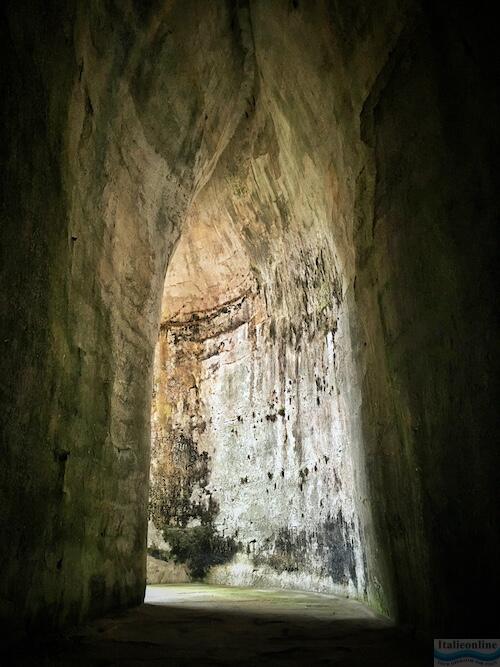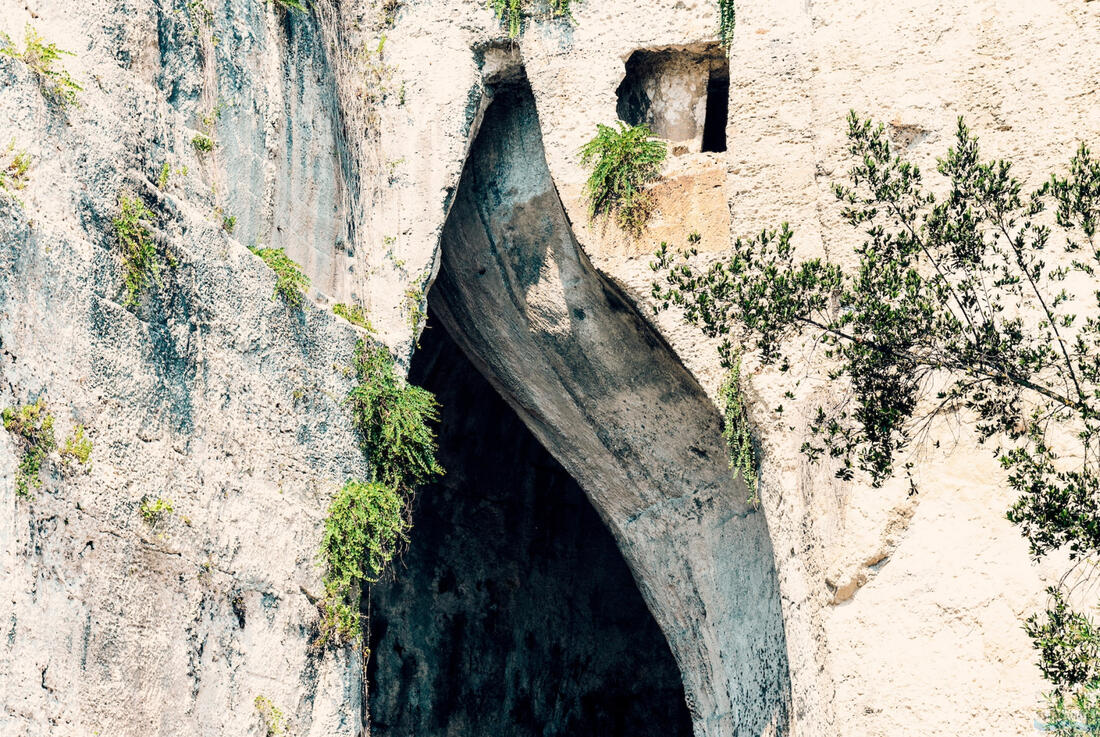What is the Ear of Dionysus?
The Ear of Dionysus is an artificial karst cave carved out of limestone rock. The cave is about 23 metres high and 65 metres long, so it is a monumental formation. Its shape and vaulted ceiling allow for an exceptional echo - the sound is amplified up to 16 times.
The name "Ear of Dionysus" comes from a legend first recorded by the painter Caravaggio during his stay in Sicily in the 17th century. According to this legend, the tyrant Dionysios I (who ruled Syracuse in the 5th century BC) used the cave as a prison for his enemies. The acoustics of the cave supposedly allowed him to hear even the whispered conversations of the prisoners, as the amplified sound bounced back to the listener. Although this is more legend than historical fact, the story has endured and continues to make the cave mysterious to this day.

Acoustics
The unique acoustic properties of Dionysus' Ear make it attractive not only to tourists but also to musicians. Many artists test the sound of their voices or instruments here. When singing or music is heard in the cave, its spaces resound like a giant natural concert hall.
Historical and cultural significance
Although the Ear of Dionysus is primarily an attraction associated with legends, the cave itself was probably originally a quarry where limestone was mined for buildings in ancient Syracuse. Some historians claim that it was also used as a water reservoir or storehouse.

How to get there?
The Ear of Dionysus is located in the Archaeological Park of Neapolis, one of the most important sites of Syracuse. Entrance to the park includes access to other monuments such as the Greek theatre, the Roman amphitheatre or the altar of Hieron II.
The Ear of Dionysus is a fascinating place for anyone interested in ancient culture, architecture and natural phenomena. Moreover, its atmosphere and acoustics will leave a deep impression on everyone.
If you are planning a visit to Syracuse, don't miss this place!







